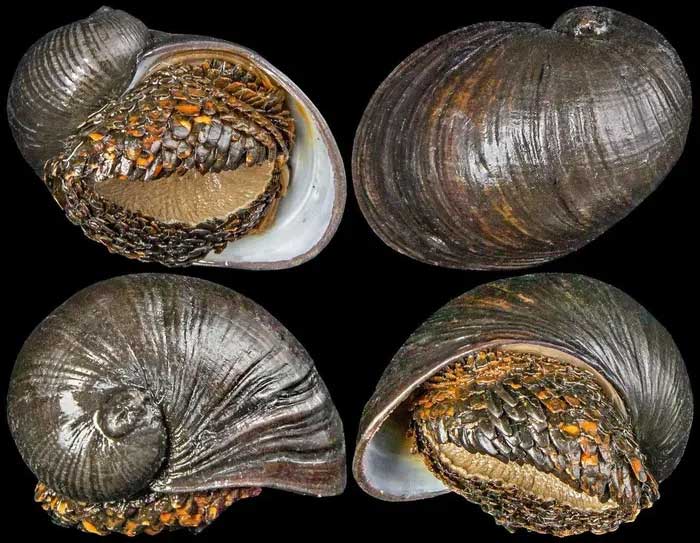The species of sea snail with a body covered in iron scales seems to be something out of a science fiction movie, but these creatures actually exist in the deep waters of the Indian Ocean.
Julia Sigwart, a biologist at the Senckenberg Research Institute in Frankfurt, Germany, is one of the few who has seen the scaly-foot gastropod (Chrysomallon squamiferum), also known as the sea pangolin. She remarked, “It looks like an armored knight crawling on the deep-sea floor.”
The habitat of this snail species is extremely harsh. They live on the ocean floor, near hydrothermal vents. These vents contain toxic chemicals and can reach temperatures exceeding 300 degrees Celsius, according to the Guardian.
The entire body and lifestyle of the scaly-foot snail depend on bacteria that thrive in a special pouch in their throat. These bacteria help convert chemicals from the hydrothermal vents into energy that sustains the scaly-foot snail’s body.
In 2019, scientists discovered that the scales on this species’ body are not meant to protect against predation but to prevent harmful threats from within.
The bacteria accumulating in the throat of the scaly-foot snail excrete sulfur as waste. This substance can be lethal to the snail.
The internal structure of the snail’s scales acts like tiny exhaust pipes, helping to draw sulfur out of their soft tissue and expel it.

The scaly-foot snail has been added to the Red List of the International Union for Conservation of Nature. (Photo: IUCN).
Although the habitat of this snail species covers less than 0.025 km2, this area is a target for deep-sea mining.
Mining companies are searching for gold, silver, and other precious metals on the ocean floor. If the already limited habitats of the scaly-foot snail are impacted, they will soon disappear.
That is why Sigwart’s team has proposed adding the scaly-foot snail to the list of endangered species in the Red List of the International Union for Conservation of Nature (IUCN).
She believes, “This is an extremely powerful communication tool. When you say a species is threatened, people all over the world understand that.”
Among the 184 endemic species living near hydrothermal vents, only 25 species are not considered at risk of extinction.


















































